Created in 1949, the Welsh Harlequin is one of the newest duck breeds. Welsh Harlequin ducks are a beautiful, practical, lightweight breed known for their excellent egg production and calm, docile temperament. Although they haven’t been around long, they have gained attention quickly and are now a popular choice among homesteaders and backyard keepers.
Characteristics
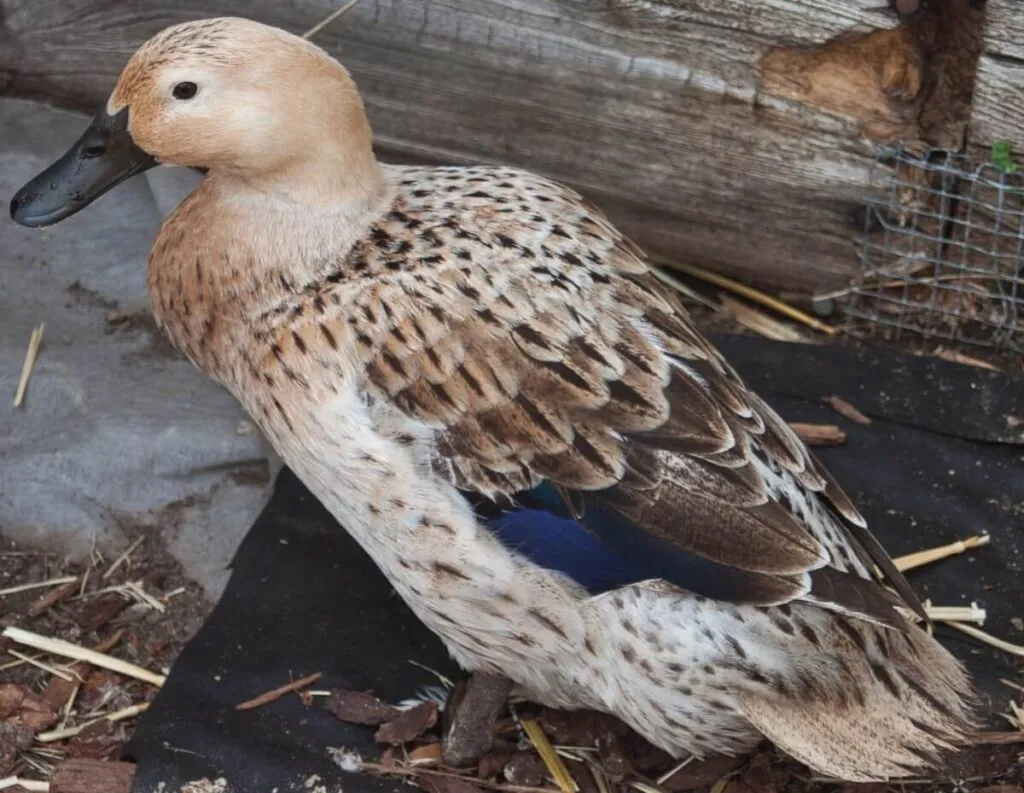
A Silver Welsh Harlequin. Photo credit: “Here’s Mama! She’s a layer too!” (CC BY-NC 2.0) by Steve Wedgwood
Since Welsh Harlequin ducks originated from the Khaki Campbell, they are typically exceptional layers. Early Welsh Harlequins were reported to lay over 300 eggs a year. In well-bred Welsh Harlequins, egg production can still reach 200-350 eggs a year, but many birds, particularly hatchery-bred ones, will only lay 100-200 eggs a year, due to poor breeding and/or outcrossing. Their eggs are white, with a very small percentage possibly tinted blue or green.
Welsh Harlequin ducks are classed as a lightweight breed, weighing 4.5-5.5 lb, approximately half a pound to a pound more than Khaki Campbells.
Due to their larger size and more substantial frame, they are sometimes considered a dual-purpose breed. They produce lean meat and pluck cleanly thanks to their light-colored breast feathers.
Unlike their forebears, the nervous Khaki Campbells, Welsh Harlequins tend to have a calm, docile demeanor. According to Bonnet in his 1960 book, Practical Duck-keeping, this means that they may actually outlay many Khaki Campbell ducks, as they are less likely to be put off laying by stress. According to Metzer Farms, Harlequins are the calmest breed on their farm.
Another area where the Welsh Harlequin differs from the Khaki Campbell is broodiness. Welsh Harlequins are quite prone to broodiness and are good at hatching their own eggs.
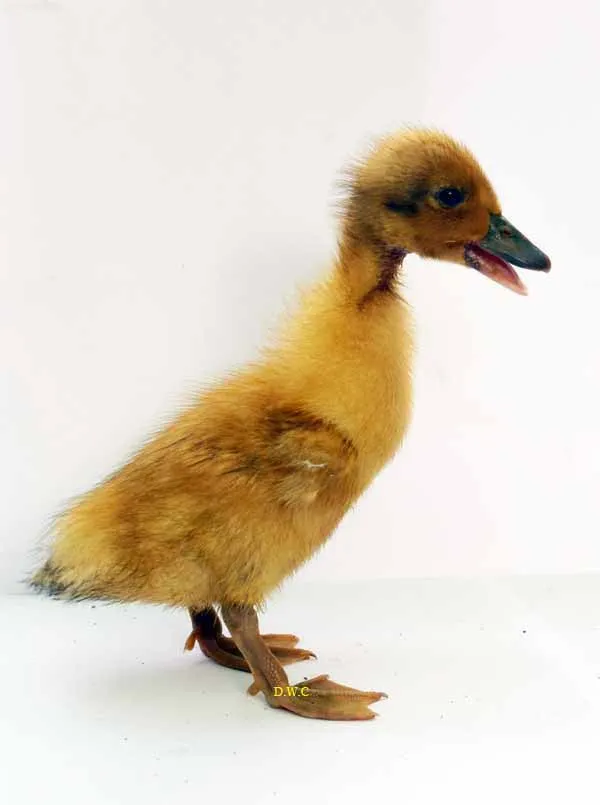
A Welsh Harlequin duckling. Photo used with permission from the Domestic Waterfowl Club of Great Britain.
They are also considered one of the quieter duck breeds, and they are active birds and good foragers. Due to their exceptional laying, potential suitability for the table, ability to hatch their eggs, and excellent foraging ability, they are well-suited to homesteads and small farms. Welsh Harlequin ducks also make great pets, particularly due to their friendliness.
Appearance
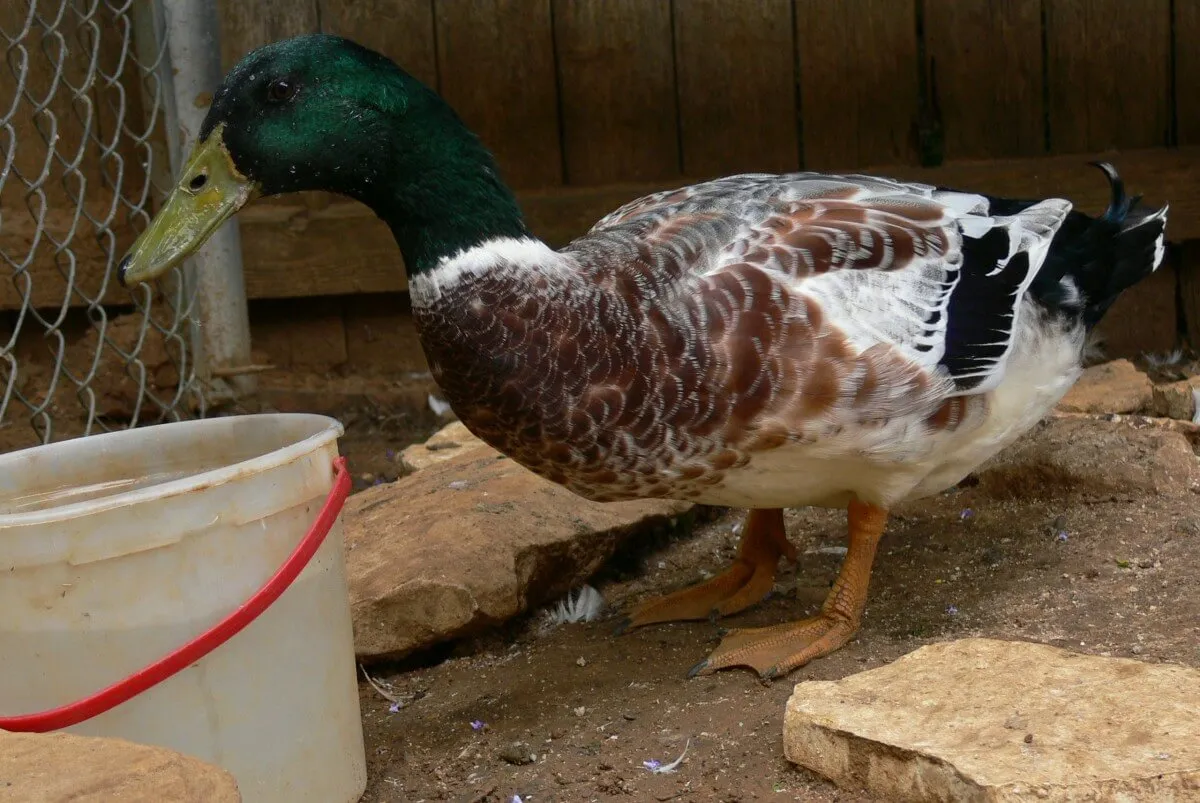
Photo credit: “Pretty Drake” (CC BY-NC 2.0) by April Shuyler
The body type of a Welsh Harlequin is similar to the Khaki, but somewhat heavier. They are streamlined with a long body, held 20-35 degrees above vertical.
There are two color varieties: Gold and Silver. Gold was the original color of the breed, but a variant had arisen by the time the breed was imported to the US. Dave Holderread, one of the most prominent duck breeders in the world, bred for this variant and named it “Silver,” and it is now the more popular color variant in the US. In the UK, meanwhile, Gold is the primary color, while Silver is mostly unknown, unrecognized, and considered “not a real Harlequin.”
Both the Silver and Gold varieties are very unique genetically. There are no other duck breeds with their exact genetic coloration and pattern. Their overall appearance is similar to a Mallard, but with heavy white “frosting.”
In the Gold variety, drakes have greenish-black heads with a subtle iridescent green sheen. A white ring fully encircles their neck. Their breast, shoulders, and flanks are creamy white but heavily laced with a rich chestnut or mahogany brown color. Their back and wings are a similar color, but with more white and cream shading and with a tortoiseshell-like pattern. The colored patch on a duck’s secondary wing feathers, called the speculum, is greenish-bronze. Their legs and feet are orange and their bill is a yellow-green with a black “bean” on the tip.
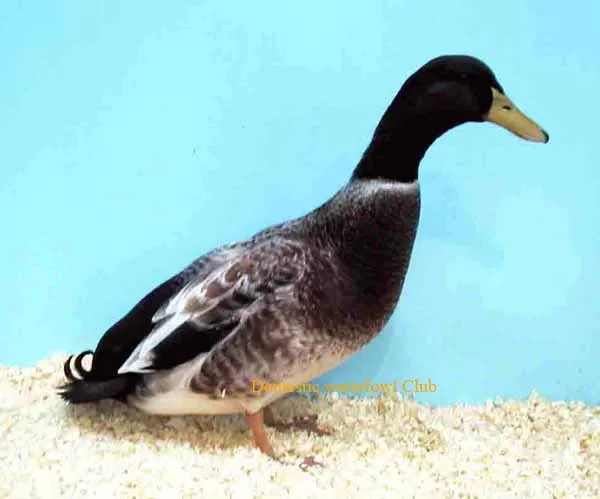
A Gold Welsh Harlequin drake. Photo used with permission from the Domestic Waterfowl Club of Great Britain.
Female Gold Welsh Harlequins’ plumage is primarily fawn-colored, over a whitish base color, accented with flecks of varying shades of brown and orange, particularly on the back, which, like the drakes, displays a tortoiseshell-like pattern. Their head is a light honey brown and should not have eye stripes. Coloration can vary from individual to individual. Like the males, they have a greenish-bronze speculum. Their feet are orange when young, but darken to a brown or orange-brown as they age. Their bill is black or greenish-black.
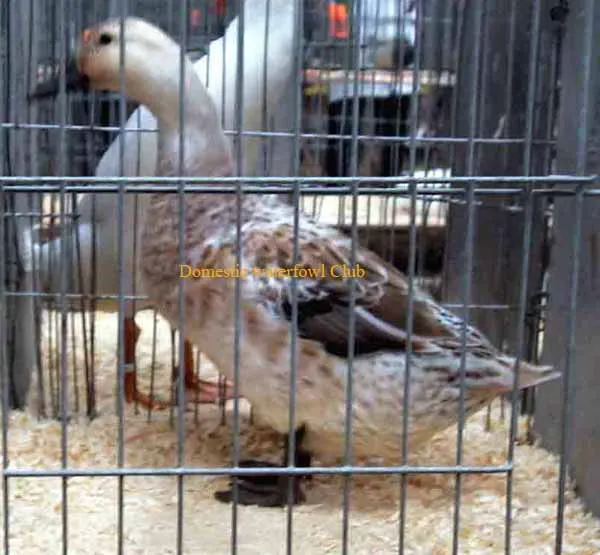
A Gold Welsh Harlequin duck. Photo used with permission from the Domestic Waterfowl Club of Great Britain.
There are a few key differences in the Silver variety. Both sexes have a vivid blue speculum, rather than the bronze-colored speculum of the Gold. The head of a Silver drake is a much more vibrant iridescent green, similar to that of a Mallard. Silver females will have more cream or gray shading than fawn, and dark brown or black stippling rather than brown or orange. Their appearance and plumage is overall higher in contrast, as opposed to the softer colors and lack of black pigments in the Gold variety.
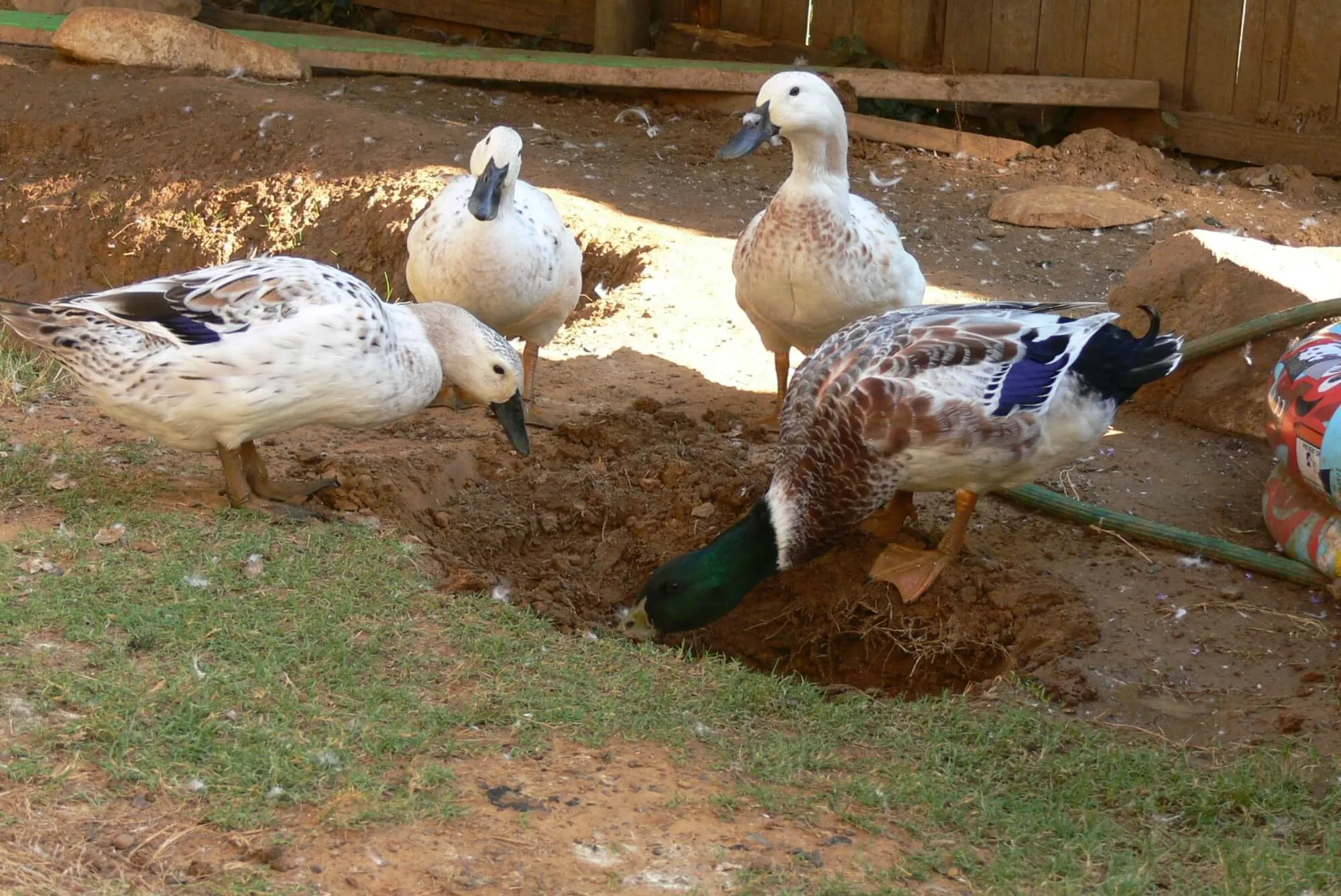
A flock of Silver Welsh Harlequin ducks. Photo credit: “In the Hole” (CC BY-NC 2.0) by April Shuyler
Sexing Ducklings
Another unique characteristic of the Welsh Harlequin is that they can often be sexed as ducklings. There are no duck breeds that are truly autosexing, but Welsh Harlequins come close. Male ducklings have dark-colored bills; female ducklings have light tan/yellowish bills with a dark tip or “bean.” However, this distinction is only apparent during the ducklings’ first few days; after that, the females’ bills darken and the difference disappears.
In high-quality Welsh Harlequin bloodlines, ducklings can be sexed with 75-90% accuracy by bill color. Unfortunately, this trait is easily lost via crossbreeding, and there are many lines where there is no reliable distinction between the sexes.
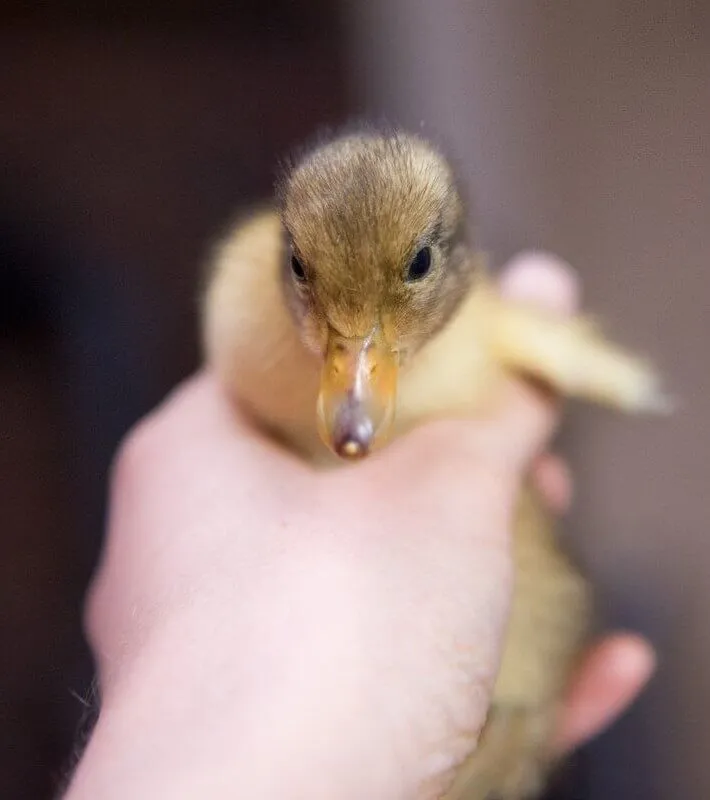
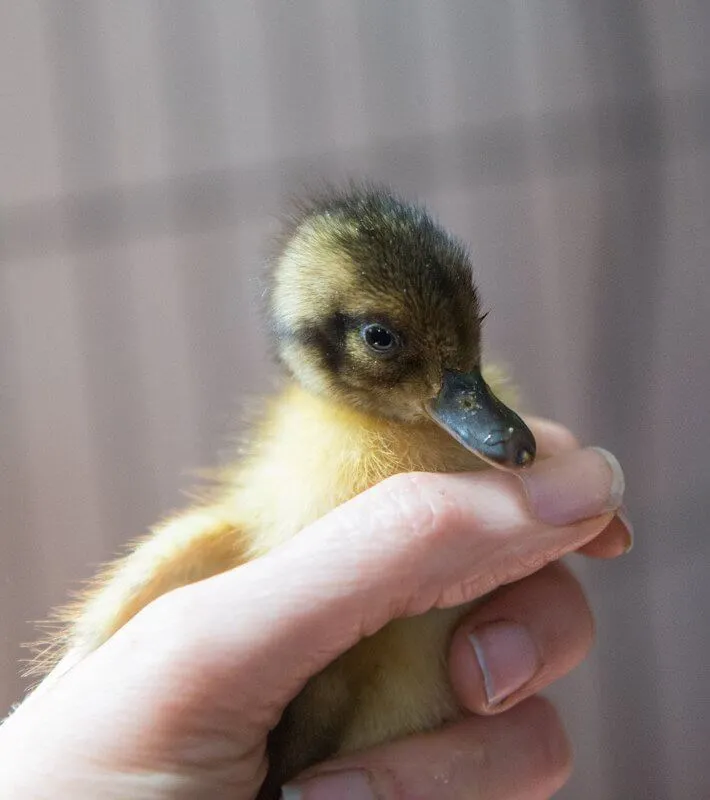
See more pictures here: https:
History
The Welsh Harlequin was initially created in Watford, Hertfordshire by Group Captain Leslie Bonnet, a Royal Air Force officer, duck breeder, and author of the book Practical Duck-Keeping (1960). In his flock of Khaki Campbells, Bonnet discovered a color mutation in two ducklings. He continued breeding this light-colored Khaki sport, initially calling them “Honey Campbells.” After moving to Criccieth in North Wales in 1949 with his flock of over 1500 ducks, he renamed them the “Welsh Harlequin.”
Bonnet’s breeding birds were wiped out in 1968 by a fox. Fortunately, the breed was saved by Edward Grayson in Lancashire, who had some of Bonnet’s original birds. Grayson crossed his birds back to Khaki Campbells to introduce new blood, and then worked on stabilizing and improving the breed. Most Welsh Harlequins today can trace their roots back to Grayson’s flock.
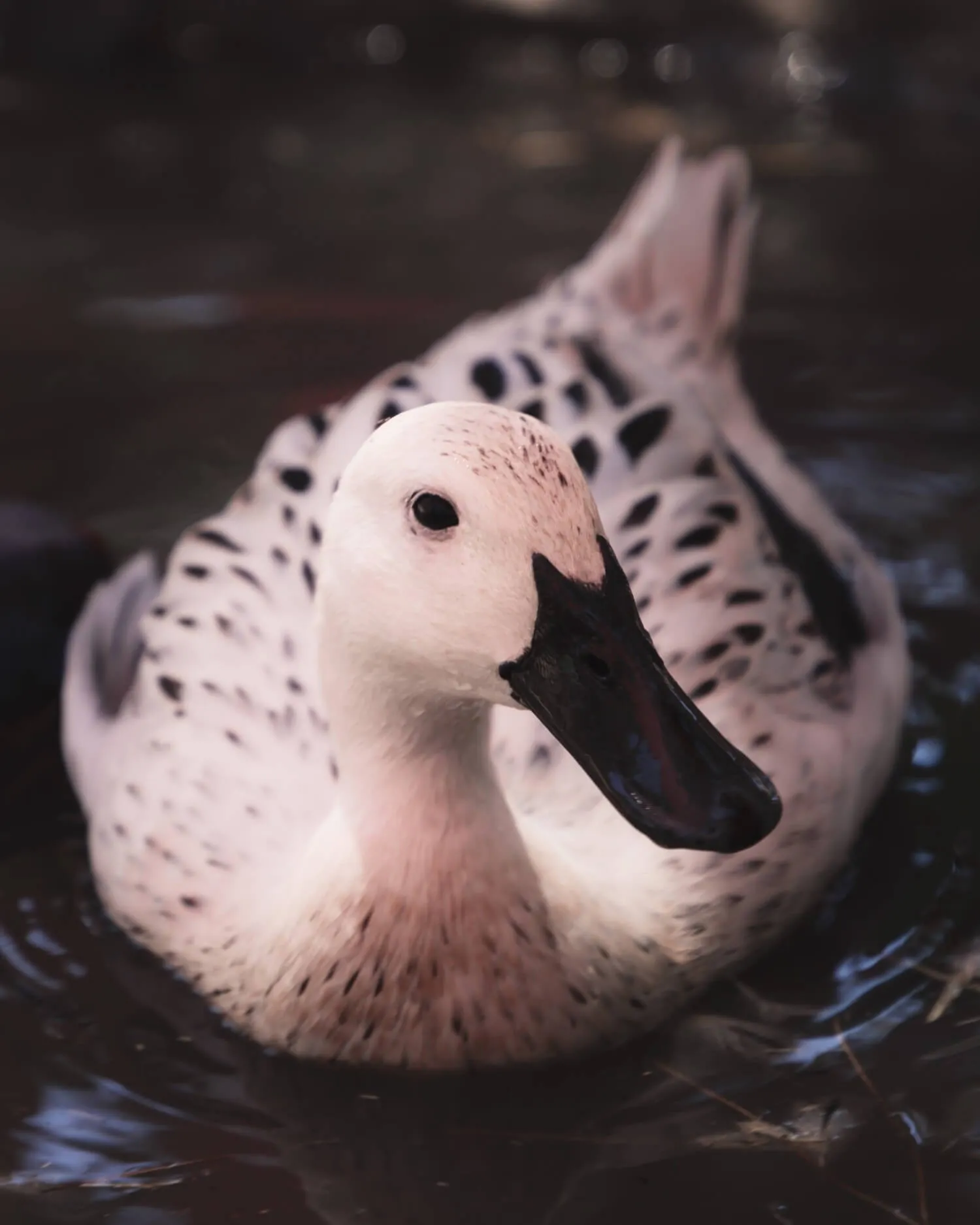
In 1968, hatching eggs were imported into the United States by John Fugate from Tennessee. In 1982, he imported more adult ducks. With the help of Dave Holderred, they bred the ducks, refined conformation, and established the two color varieties. The Welsh Harlequin was admitted to the British Standards in 1991 (in the Gold variety) and to the American Poultry Association in 2001 (in the Silver variety).
Their popularity has continued to grow. They were labelled as “Critical” by the American Livestock Breeds Conservancy (ALBC) but were moved to the “Watch” category in 2016.
Leave a comment
Your email address will not be published.